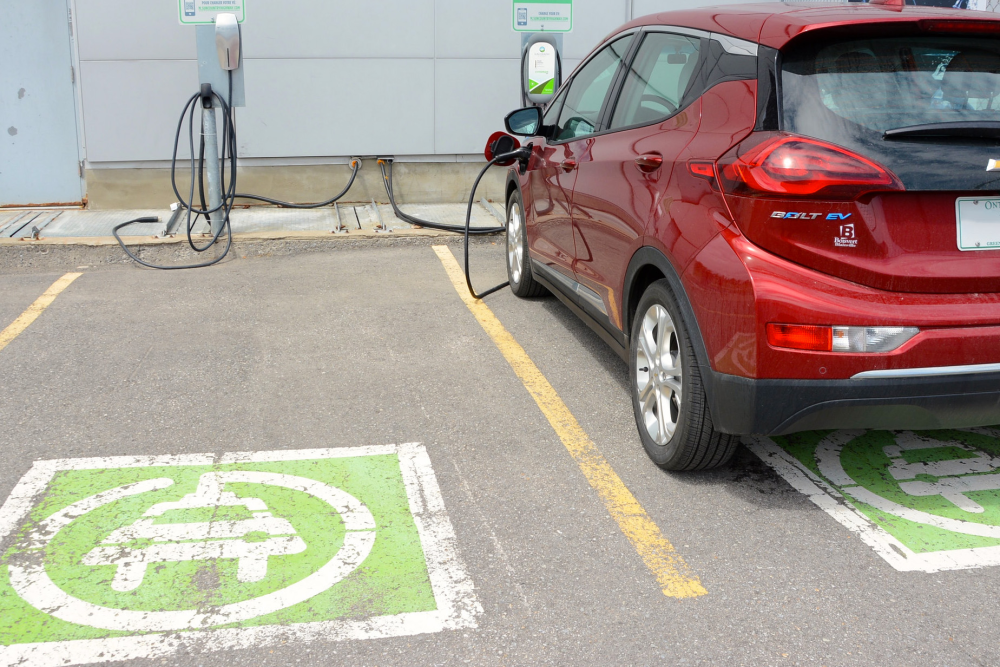The most recent manifestations of climate change have been devastating. Over the past two months, wildfires blazed in nearly every province, burning through more than 19 million acres (so far), and putting this year on track to be the worst wildfire season in recorded history.
Across Canada, some 156,000 people have been forced to flee their homes and masks have made a comeback. The amount of carbon entering the atmosphere reached approximately 160 megatons, the largest annual estimate for the country in 21 years of Global Fire Assimilation System data.
One of the single most impactful actions we can take to minimize the carbon pollution we produce is to tackle emissions from the transportation sector. Greenhouse gases (GHGs) from this sector contribute nearly a quarter of Canada’s total carbon emissions. Approximately half of those emissions are generated by tailpipe pollution from passenger cars and light-duty trucks.
The federal government is in the last stages of finalizing regulations designed to speed up the electrification of cars, which will all but eliminate tailpipe pollution. It would be sheer folly to get this piece of climate policy wrong.
Speeding up the electric car strategy
Under the new regulations, automakers must produce an increasing number of electric passenger vehicles over the next few years until they reach a point where all the cars made are electric. By 2030, 60 per cent of all new cars and light-duty trucks sold in Canada must be fully electric (not hybrid). By 2035, 100 per cent of new passenger vehicles sold should be electric, i.e., zero-emission.
Contrary to a claim made by Canadian Vehicle Manufacturers’ Association (CVMA), that the new regulatory regime is both outdated and too little, too late, it is neither. Our analysis at the Pembina Institute of competing policy options concluded that a strategy with a sales mandate as its central plank is the best way to ensure we switch from driving cars that pollute to ones that don’t.
If Canada succeeds in replacing gas-fuelled cars with electric ones at the scale the new regulations call for, emissions from transportation would drop by 42 to 46 per cent below 2005 levels. This lines up with Canada’s commitment to a sector-wide emissions decline by 2030.
And as a federal regulation, the sales mandate for electric light-duty passenger vehicles is hardly starting from scratch. Proof of its effectiveness is readily available.
Sales requirements are already working
British Columbia introduced a province-wide sales requirement for EVs in 2019 through its Zero-Emission Vehicle Act, which requires automakers to meet increasing annual levels of EV sales, reaching 100 per cent by 2040.
 In 2022, electric vehicles accounted for 18.1 per cent of all new light-duty vehicle sales in B.C. Just prior to the legislation, EVs made up 4.1 per cent of all new passenger car sales. The province is tracking to exceed its sales targets, which have been revised upwards to 100 per cent by 2035, five years earlier than the original deadline.
In 2022, electric vehicles accounted for 18.1 per cent of all new light-duty vehicle sales in B.C. Just prior to the legislation, EVs made up 4.1 per cent of all new passenger car sales. The province is tracking to exceed its sales targets, which have been revised upwards to 100 per cent by 2035, five years earlier than the original deadline.
Like B.C., Quebec also passed regulated targets for the number of new electric car sales. From 8.9 per cent of new cars sold in 2021, EVs are now 13.9 per cent of the light-duty vehicle market in Quebec.
In Ontario, Canada’s most populous province and the country’s largest vehicle market, registrations of zero-emission vehicles in the first quarter of this year posted a 6.2 per cent market share. Ontario has not implemented sales targets for electric cars.
True, a sales standard is not the only way to encourage manufacturers to produce more electric cars while reducing their production of internal combustion cars over time. The U.S. recently proposed regulations that will limit allowable tailpipe emissions from passenger vehicles. The response there will be to manufacture increasingly fuel-efficient cars and to boost production of EVs.
A multi-pronged approach
The proposal to minimize tailpipe pollution by imposing limits on GHGs will unquestionably accelerate the production of battery-electric cars. But if Canada were to do likewise, we would fail to meet our goals. Rather than 60 per cent of new sales in less than 10 years’ time, we’d land somewhere closer to 50 per cent.
CVMA is right that we need to build out charging infrastructure. And, yes, we do need to boost the supply chain of critical minerals. More support to incentivise Canadians to buy electric would be great.
But our roads diverge on the critical importance of implementing an EV sales standard. While many elements need to be in place to encourage EV uptake, the sales mandate is demonstrably key to getting enough EVs on the road to help Canada reach its climate goal.







